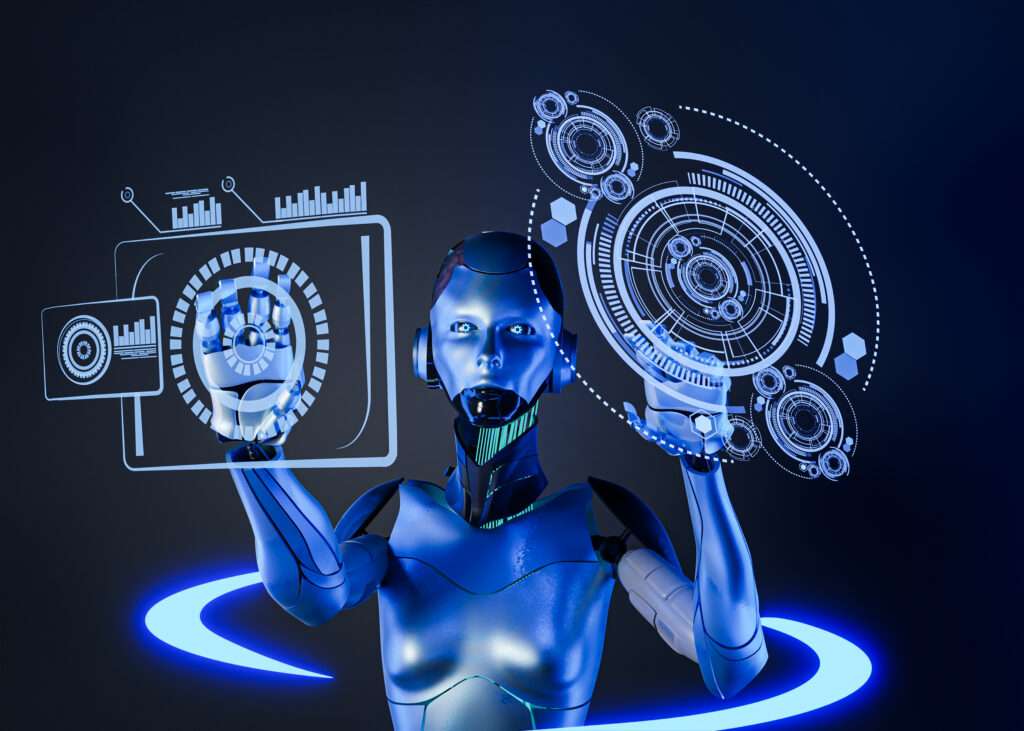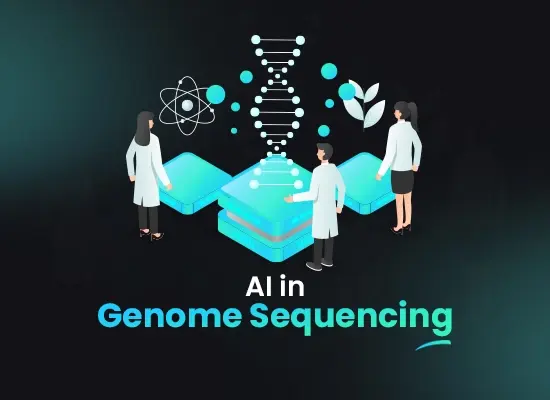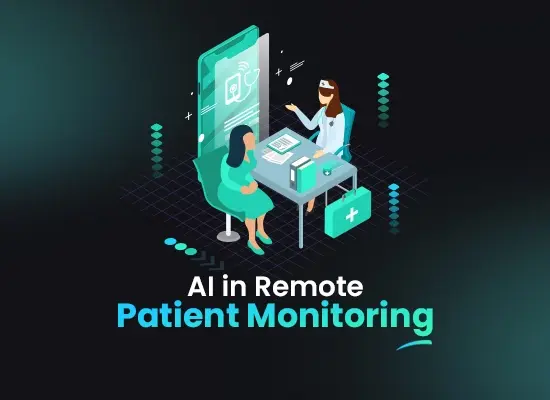
Contents
Machine learning (ML) development is a multidisciplinary field that focuses on creating and implementing algorithms and models capable of learning and making predictions or decisions without explicit programming. At its core, machine learning is a subset of artificial intelligence (AI) that enables systems to automatically improve their performance over time through experience and data.
The development process in machine learning typically involves several key stages. The first step is defining the problem or task at hand, whether it be classification, regression, clustering, or other types of predictions. Clear objectives help guide the selection of appropriate algorithms and models.
Data acquisition and preprocessing are crucial aspects of AI and machine learning development. Quality and quantity of data directly impact the performance of the models. Raw data often requires cleaning, normalization, and feature engineering to ensure it is suitable for training and testing. The availability of diverse and representative datasets is essential for creating robust and generalizable models.
The choice of algorithms plays a significant role in Machine Learning development. Depending on the nature of the problem, developers may opt for supervised learning algorithms for labeled data, unsupervised learning for unlabeled data, or reinforcement learning for decision-making scenarios. Selecting the right algorithm involves a balance between model complexity, interpretability, and computational efficiency.
Ethical considerations, transparency, and interpretability are increasingly important in machine learning development. Developers must address bias in data, interpretability of models, and potential societal impacts, ensuring responsible and fair AI applications.
In summary, machine learning development encompasses problem definition, data acquisition and preprocessing, algorithm selection, model training and optimization, validation and testing, deployment, and ongoing monitoring and maintenance. It is a dynamic and evolving field that requires expertise in data science, statistics, computer science, and domain-specific knowledge.
What is Machine Learning?
Machine learning is a subset of artificial intelligence (AI) that focuses on developing algorithms and statistical models that enable computer systems to improve their performance on a specific task through learning from data, without being explicitly programmed. The primary goal of machine learning is to allow computers to automatically analyze and adapt to patterns in data, making predictions or decisions without human intervention.
At its core, machine learning relies on the idea that systems can learn from experience and improve their performance over time. This learning process involves the use of mathematical models and algorithms that enable computers to recognize patterns, extract meaningful insights, and make informed decisions based on the data they are exposed to. There are various types of machine learning approaches, including supervised learning, unsupervised learning, and reinforcement learning, each with its own set of techniques and applications.
In supervised learning, the algorithm is trained on a labeled dataset, where the input data is paired with corresponding output labels. The model learns to map input features to the correct output through this training process, allowing it to make predictions on new, unseen data. Unsupervised learning, on the other hand, deals with unlabeled data and focuses on finding patterns or relationships within the data without explicit guidance. Clustering and dimensionality reduction are common tasks in unsupervised learning.
Reinforcement learning involves an agent interacting with an environment and learning to make decisions by receiving feedback in the form of rewards or penalties. The agent aims to maximize cumulative rewards over time, leading to autonomous decision-making and behavior adaptation.
Machine learning has found applications in a wide range of domains, including image and speech recognition, natural language processing, recommendation systems, autonomous vehicles, and healthcare. The increasing availability of large datasets, improved algorithms, and computational power has fueled the rapid advancements in machine learning, making it a crucial technology in today’s data-driven world.
ML Development Life Cycle
Once an algorithm is chosen, the next step is training the model using the prepared dataset. During this phase, the model learns patterns and relationships within the data. Fine-tuning and optimizing hyperparameters help improve the model’s performance. The development team must regularly evaluate the model’s accuracy, precision, recall, and other relevant metrics to ensure it meets the desired performance criteria.
Validation and testing are critical stages to assess the model’s generalization on new, unseen data. Overfitting, where a model performs well on training data but poorly on new data, is a common challenge that developers strive to mitigate.
Deployment marks the transition from development to practical application. Integrating the model into a production environment involves considerations for scalability, reliability, and real-time performance. Monitoring and maintenance become ongoing tasks to address changes in data patterns, prevent model degradation, and ensure continued relevance.
The 6 steps in a standard ml development life cycle:
- Planning
- Data Preparation
- Model Engineering
- Model Evaluation
- Model Deployment
- Monitoring and Maintenance
Every stage of the machine learning cycle adheres closely to specifications and limitations as part of a quality assurance framework for ongoing maintenance and improvement. Read the CRISP-ML(Q) blog to find out more about quality assurance.
For managers and non-technical people, take a look at our quick course on the principles of machine learning. It will aid in their understanding of deep learning (AI), modelling, and machine learning in general. The distinctions between AI and machine learning can also be discussed in a different article.
Planning
Evaluating the Machine Learning application’s scope, success metric, and viability is part of the planning step. To enhance the current procedure, you must comprehend the business and how machine learning might be applied. For instance, is machine learning necessary? Can we use basic programming to accomplish similar requests?
It is vital that you comprehend the cost-benefit analysis and the strategy of delivering the solution in stages. Additionally, you must establish precise and quantifiable success criteria for economic (key performance indicators), business, and machine learning models (accuracy, F1 score, and AUC).
Data Preparation
Four other sections make up the data preparation section: data acquisition and labelling, cleaning, management, and processing.
- Data Collection and Labeling – Most firm resources, including funds, time, personnel, subject matter experts, and legal agreements, are needed for data gathering and labelling.
- Data Cleaning – The data will next be cleaned by analysing incorrectly labelled data, eliminating outliers, lowering noise, and imputing missing values. In order to automate this procedure and carry out data quality checking, you will build a data pipeline.
- Data Processing – Feature engineering, feature selection, handling unequal classes, data augmentation, normalisation, and scaling are all part of the data processing phase.
- Data Management – Lastly, we will work out metadata storage, ETL pipeline creation, data versioning for repeatability, and data storage solutions. This section will guarantee a steady flow of data for training the model.
Model Engineering
During this stage, a machine learning model is built and trained using all the data gathered during the design phase. As an illustration, consider monitoring model metrics, guaranteeing scalability and resilience, and maximising computation and storage resources.
- Conduct thorough study to create an effective model architecture.
- Defining metrics for models.
- Using the training and validation dataset, train and validate the model.
- Tracking features, code modifications, metadata, experiments, and processes for machine learning.
- Carrying out ensembling and model compression.
- Including domain knowledge experts in the interpretation of the findings.
Our main areas of interest will include machine learning experiments, ensembling, model training, code quality, and model architecture. For reproducibility, the features, development environment, model architecture, ML experiments, hyperparameters, and metadata are versioned and preserved.
Seamless Collaboration | Cost-Efficient Solutions | Faster Time-to-Market

Seamless Collaboration | Cost-Efficient Solutions | Faster Time-to-Market

Model Evaluation
Once the model has been finalised, it is time to test different metrics. As this is the first time the model has been tested on a test dataset, we will make sure to include subject matter experts in order to pinpoint the prediction error.
When developing AI solutions, we also need to make sure that we adhere to the legal, ethical, and industrial frameworks. We will also test the resilience of our model using both random and real-world data. ensuring that the model draws conclusions quickly enough to be useful.
Ultimately, we will determine whether or not to deploy the model by comparing the outcomes with the anticipated success indicators. All processes are versioned and recorded throughout this step in order to preserve reproducibility and quality.
Model Deployment
The models can typically be installed on an edge device, web browser, local server, package as software, and cloud. After that, you can retrieve the forecasts using a dashboard, web interface, plugin, or API. The deployment plan is a crucial component.
Make sure the user experience has been enhanced by the improvements and that they are seamless. A project manager should also draft a catastrophe management strategy. A fallback plan, ongoing observation, anomaly identification, and loss minimization should all be part of it.
Monitoring and Maintenance
The entire monitoring process is automated, and anomalies, decreased model and system performance, and unfavourable consumer feedback are reported to the experts. We will evaluate the problems and attempt to train the model on fresh data or modify model designs in response to a reduced performance notice. It’s an ongoing process.
Machine Learning Development Services
Machine learning development services offered by most companies involve a range of activities aimed at leveraging machine learning techniques to solve complex problems and extract valuable insights from data. These services typically encompass the entire machine learning development lifecycle, from problem definition and data preparation to model training, deployment, and ongoing optimization.
One of the key components of machine learning development services is the identification and definition of specific business problems that can benefit from machine learning solutions. This involves collaboration between data scientists and domain experts to understand the nuances of the problem and define clear objectives for the machine learning system. Companies often provide consultation services to help clients identify areas where machine learning can add significant value and achieve specific business goals.
Data preparation is a crucial step in the machine learning process, involving the collection, cleaning, and preprocessing of relevant data. Machine learning development services include expertise in data engineering to ensure that the input data is suitable for training robust models. This may also involve the integration of diverse data sources and handling issues such as missing data or outliers.
Model development and training are core aspects of machine learning services, where algorithms are selected, and models are built and trained using the prepared data. Companies employ experienced data scientists and machine learning engineers who are proficient in various algorithms and frameworks. They may develop custom models tailored to the specific needs of a client or leverage pre-trained models from established libraries.
Once a model is trained, deployment services become essential for integrating the machine learning solution into the client’s existing infrastructure. This involves deploying the model in production environments, ensuring scalability, and addressing any technical challenges associated with real-time data processing. Integration with other systems, such as databases or application interfaces, is also part of this service.
Ongoing model monitoring, maintenance, and optimization are critical for ensuring the continued effectiveness of the deployed machine learning solution. Many companies offer services for monitoring model performance, identifying drift in data distributions, and retraining models when necessary. Regular maintenance and optimization help keep the models up-to-date with evolving data patterns and changing business requirements.
Machine learning development services also often include support and training for clients’ teams to facilitate the effective utilization of the deployed models. This may involve providing documentation, conducting workshops, or offering ongoing support to address any issues or updates related to the machine learning solution.
In summary, machine learning development services provided by most companies encompass problem definition, data preparation, model development and training, deployment, ongoing monitoring and maintenance, and client support and training. These services aim to empower businesses to harness the potential of machine learning to enhance decision-making, automate processes, and gain a competitive edge in today’s data-driven landscape.
Machine Learning Development Company
As of my last knowledge update in January 2022, many companies across various industries have been incorporating machine learning into their products and services. Keep in mind that the use of machine learning may evolve over time, and new companies may have emerged since my last update. Here is a list of some well-known companies that have been actively using machine learning development services:
- Kodexo Labs is a US-based AI software development company that specializes in developing innovative software that converts complex business problems into understandable solutions. Our committed staff always surpasses expectations and remains at the forefront of machine learning breakthroughs.
- Google is a machine learning development company that utilizes machine learning in various products such as Google Search, Google Photos, and Google Translate.
- Amazon incorporates machine learning in its e-commerce platform, as well as in services like Alexa, Amazon Go, and AWS.
- Facebook is a machine learning development company that leverages machine learning for content personalization, image recognition, and other features on the platform.
- Microsoft applies machine learning in products like Azure Machine Learning, Microsoft Office, and in its cloud services.
- IBM is a machine learning development company that offers machine learning solutions through IBM Watson for industries like healthcare, finance, and more.
- Apple uses machine learning in products like Siri, facial recognition in photos, and for improving user experience across various devices.
- Netflix is a machine learning development company that applies machine learning algorithms for content recommendation to enhance user engagement.
- Uber utilizes machine learning for route optimization, pricing algorithms, and fraud detection.
- Airbnb is a machine learning development company that incorporates machine learning for personalized search recommendations and pricing optimization.
- Twitter implements machine learning for content curation, sentiment analysis, and advertising.
- Salesforce is a machine learning development company that integrates machine learning into its CRM platform for predictive analytics and customer insights.
- LinkedIn utilizes machine learning for personalized job recommendations, network suggestions, and content curation.
- Tesla is a machine learning development company that applies machine learning in self-driving car technology and for enhancing the performance of its vehicles.
- Palantir Technologies provides machine learning solutions for data integration, analysis, and decision support.
- Adobe incorporates machine learning in creative tools like Photoshop and for marketing analytics.
- Zillow is a machine learning development company that utilizes machine learning for real estate price predictions and recommendations.
- PayPal implements machine learning for fraud detection and risk management.
- Siemens applies machine learning in industrial automation and digitalization.
- General Electric (GE) utilizes machine learning in various sectors, including healthcare, energy, and aviation.
- Samsung incorporates machine learning in products like smartphones, smart TVs, and home appliances.
Latest Developments in Machine Learning
The field of machine learning is dynamic, with continuous advancements. Some recent developments include:
Latest Developments in Machine Learning:
Researchers have been working on refining and creating more efficient machine learning algorithms. Techniques like Transformers, GPT (Generative Pre-trained Transformer), and BERT (Bidirectional Encoder Representations from Transformers) have shown significant improvements in natural language processing tasks.
Advancements in Deep Learning:
Recent breakthroughs in deep learning architectures have led to improved performance in computer vision, speech recognition, and other domains. Techniques such as neural architecture search (NAS) are contributing to the development of more powerful and efficient deep learning models.
Integration of Machine Learning with Edge Computing:
There is a growing emphasis on deploying machine learning models directly on edge devices, reducing the need for constant communication with centralized servers. This allows for real-time processing and decision-making, making applications more responsive.
Explainable AI (XAI):
As the adoption of machine learning in critical applications increases, the need for interpretable and explainable AI models has become crucial. Researchers are actively working on developing methods to make machine learning models more transparent and understandable, addressing the “black box” nature of certain algorithms.
Machine Learning for Drug Discovery:
In the healthcare sector, there have been notable developments in using machine learning for drug discovery. AI models are being employed to analyze vast datasets, predict potential drug candidates, and accelerate the drug development process.
Automated Machine Learning (AutoML):
AutoML tools and platforms have gained popularity, allowing users with limited machine learning expertise to automate the process of model selection, hyperparameter tuning, and feature engineering. This democratization of machine learning simplifies its application across various domains.
Reinforcement Learning Breakthroughs:
In reinforcement learning, there have been breakthroughs in training more complex models with improved stability and efficiency. This has applications in robotics, game playing, and autonomous systems.
Machine Learning in Quantum Computing:
Researchers are exploring the intersection of machine learning and quantum computing, aiming to leverage quantum algorithms for more efficient machine learning tasks, particularly in optimization and pattern recognition.
Continual Learning and Lifelong Learning:
The latest developments in machine learning focus on overcoming the challenge of adapting models to new information over time. Ongoing advancements in continual learning and lifelong learning approaches are garnering attention in this context. These cutting-edge methods facilitate the continuous learning of models, enabling them to glean insights from new data while retaining knowledge acquired in earlier stages.
This emphasis on perpetual learning marks a significant stride in the field, underscoring the importance of keeping machine learning models updated and responsive to evolving datasets. The latest strides in continual and lifelong learning reflect the field’s commitment to ensuring that models not only adapt to new information seamlessly but also leverage past knowledge for enhanced performance.
Seamless Collaboration | Cost-Efficient Solutions | Faster Time-to-Market

Seamless Collaboration | Cost-Efficient Solutions | Faster Time-to-Market

Ethical Considerations in Machine Learning:
The latest developments in machine learning also involve increased focus on ethical considerations. Researchers and practitioners are actively working on developing frameworks for responsible AI, addressing issues related to bias, fairness, and transparency.
In conclusion, the latest developments in machine learning span various aspects, including algorithmic advancements, integration with emerging technologies, and a growing emphasis on ethical considerations and transparency.
Conclusion
Machine learning development refers to the iterative process of creating and refining algorithms that enable computer systems to learn from data and make intelligent decisions without explicit programming. It involves the utilization of statistical models and algorithms that allow systems to recognize patterns, make predictions, and improve performance over time through experience.
The development cycle typically encompasses tasks such as data collection, preprocessing, model training, validation, and deployment. Engineers and data scientists work on optimizing models for accuracy, efficiency, and scalability. As a dynamic field, machine learning development leverages advancements in algorithmic techniques, hardware capabilities, and domain-specific knowledge to address diverse applications ranging from natural language processing and computer vision to healthcare and finance. Ethical considerations, interpretability, and continuous learning are increasingly integral aspects of machine learning development.

Author Bio
Frequently Asked Questions (FAQs)
How is machine learning different from normal software development?
Machine learning involves creating algorithms that enable computers to learn and make predictions from data, adapting without explicit programming. In contrast, normal software development entails writing explicit instructions for computers to execute predefined tasks without learning or adapting capabilities.
How to develop a machine learning algorithm?
To develop a machine learning algorithm, begin by defining the problem and collecting relevant data. Preprocess the data, split it into training and testing sets, choose a suitable algorithm, train the model, evaluate its performance, fine-tune parameters, and deploy the finalized algorithm for real-world applications.
How to develop a machine learning model?
To develop a machine learning model, begin by defining the problem and collecting relevant data. Preprocess the data, split it into training and testing sets, and choose a suitable algorithm. Train the model, fine-tune parameters, and evaluate performance. Iterate as needed for optimization, considering ethical implications throughout the process.
Is machine learning harder than web development?
Comparing machine learning and web development difficulty is subjective. Machine learning involves complex algorithms, mathematical concepts, and data manipulation, demanding a strong foundation in computer science. Web development emphasizes coding, design, and architecture, requiring a comprehensive understanding of various technologies and frameworks.
Should i learn machine learning or web development?
Choosing between machine learning and web development depends on your interests and career goals. Learn machine learning for data analysis, AI, and pattern recognition. Opt for web development if you enjoy creating websites and applications. Consider your passion and the industry’s demand for each field.
What is model development in machine learning?
Model development in machine learning involves creating and refining algorithms or mathematical models that can analyze data, learn patterns, and make predictions or decisions. It encompasses selecting, training, and optimizing models to achieve accurate and effective performance in specific tasks or applications.
What is a machine learning engineer?
A machine learning engineer is a professional who designs, develops, and implements machine learning algorithms and models. They leverage data to create systems that can learn and make predictions, enabling applications in various domains such as finance, healthcare, and technology.
What is inference in machine learning?
In machine learning, inference is the process of drawing conclusions or making predictions based on a trained model’s analysis of new, unseen data. It involves applying learned patterns and relationships from training data to make informed decisions or generate outputs for novel inputs.
What is bias in machine learning?
Bias in machine learning refers to the systematic error or deviation of a model’s predictions from the true values, often influenced by skewed training data. It can result in unfair or inaccurate outcomes, reflecting and perpetuating existing societal prejudices if not addressed appropriately.
What is classification in machine learning?
Classification in machine learning is the process of categorizing data into predefined classes or labels based on its features. It involves training a model on a labeled dataset to accurately predict the class of new, unseen instances, enabling automated decision-making and pattern recognition.





